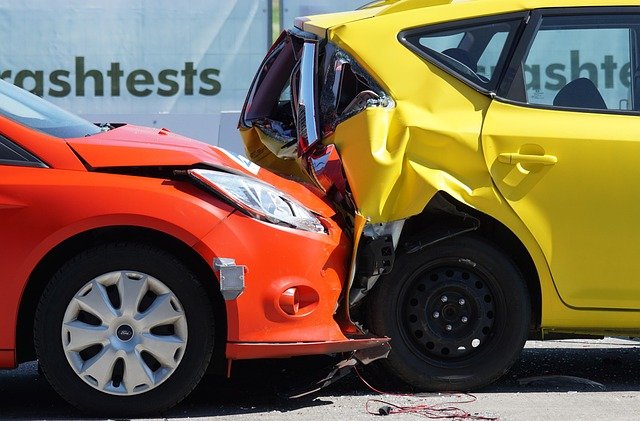Understanding Salvaged Cars and How They Are Used
Salvaged cars are vehicles that have had big damage but are not thrown away. People can study how these cars are fixed, recycled, or reused for parts. Learning about salvaged cars helps you see how vehicles get a second life and how materials can be used again in new ways.

What Are Salvaged Vehicles?
Salvaged vehicles are cars that have been declared a total loss by insurance companies, typically due to accidents, flood damage, theft recovery, or other incidents where repair costs exceed a certain percentage of the vehicle’s value. This threshold varies by state but usually ranges from 60 to 90 percent of the car’s actual cash value. Once a vehicle receives a salvage title, it cannot be legally driven on public roads until it undergoes inspection and receives a rebuilt title. The salvage designation protects consumers by alerting them to the vehicle’s history, ensuring transparency in the used car market. These vehicles enter salvage yards where they are assessed for potential restoration or parts harvesting.
How Recycled Car Parts Benefit the Industry
The market for recycled car parts has grown substantially as salvage yards extract usable components from damaged vehicles. Engines, transmissions, body panels, electronics, and interior components can often be salvaged and resold at significant discounts compared to new parts. This practice reduces waste, conserves manufacturing resources, and provides affordable repair options for vehicle owners. Professional salvage operations carefully catalog and test parts to ensure quality before resale. Environmental benefits include reduced landfill waste and decreased demand for new part production, which requires substantial energy and raw materials. Many repair shops rely on recycled parts to keep repair costs manageable for customers while maintaining quality standards.
Auto Repair Learning Through Salvaged Vehicles
Salvaged vehicles serve as excellent educational tools for aspiring mechanics and automotive students. Technical schools and training programs often purchase salvage cars to provide hands-on experience without the risk of damaging functioning vehicles. Students can practice disassembly, diagnosis, welding, painting, and reassembly techniques on these cars. Home mechanics and hobbyists also benefit from purchasing salvaged vehicles to develop skills and understanding of automotive systems. The lower purchase price makes experimentation more accessible, allowing learners to make mistakes without significant financial consequences. Online communities and forums dedicated to salvage vehicle restoration provide additional learning resources, sharing techniques and troubleshooting advice.
The Vehicle Restoration Process Explained
Restoring a salvaged vehicle requires careful planning, mechanical knowledge, and often significant investment. The process begins with thorough inspection to assess structural damage, mechanical issues, and safety concerns. Frame straightening may be necessary if the vehicle sustained collision damage. Mechanical systems including the engine, transmission, brakes, and suspension must be repaired or replaced to ensure safe operation. Electrical systems require testing and repair, as water damage or collision impact can cause complex wiring issues. Body work involves panel replacement, rust repair, and refinishing. Once repairs are complete, the vehicle must pass state inspection to receive a rebuilt title, allowing legal road use. Documentation of all repairs and parts used is essential for the inspection process.
Sourcing Used Car Materials from Salvage Yards
Salvage yards operate as organized businesses that inventory and sell used car materials to repair shops, individual consumers, and parts resellers. Modern yards use computerized systems to track available parts, making searches efficient for specific components. Buyers can often inspect parts before purchase, and many yards offer limited warranties on mechanical components. Prices for used parts typically range from 30 to 70 percent less than new equivalents, depending on the part type, condition, and vehicle make and model. Pull-your-own salvage yards offer even lower prices, allowing customers to remove parts themselves in exchange for reduced costs. Online salvage networks connect buyers with yards nationwide, expanding access to rare or hard-to-find components for older or uncommon vehicles.
Practical Applications and Market Considerations
Salvaged vehicles serve multiple markets, from budget-conscious consumers seeking affordable transportation to racing enthusiasts building project cars. Export markets also purchase salvage vehicles for use in countries with less stringent vehicle regulations. The salvage auction industry has grown with online platforms connecting buyers and sellers globally. Understanding market values helps buyers avoid overpaying for salvage vehicles. Factors affecting value include the extent of damage, vehicle age, make and model popularity, and parts availability. Professional rebuilders often focus on high-value vehicles where restoration costs remain below the finished vehicle’s market value. Insurance considerations are important, as some carriers limit coverage options for rebuilt title vehicles or charge higher premiums.
Conclusion
Salvaged vehicles play an important role in the automotive ecosystem, providing affordable parts, learning opportunities, and restoration projects while reducing environmental waste. Whether sourcing recycled components for repairs, learning automotive skills, or undertaking full vehicle restoration, understanding how salvaged cars function in the marketplace enables informed decisions. The salvage industry continues evolving with improved inventory systems, quality standards, and accessibility, making these resources increasingly valuable for various automotive needs. Proper research, realistic assessment of skills and resources, and attention to legal requirements ensure successful outcomes when working with salvaged vehicles.




